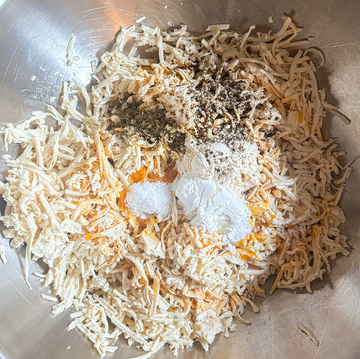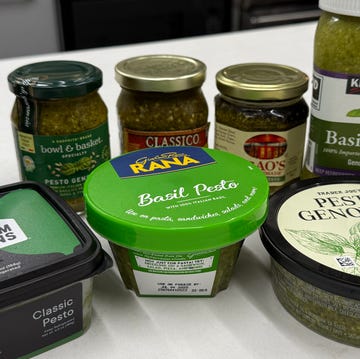If you care about the quality of your food, the livelihood of farmers, and the sustainability of our food system, then you probably already love the farmers' market. This season, consider taking your love of local food one step further by taking part in Community Supported Agriculture.
Community Supported Agriculture—or C.S.A. as it is often called for short—is extremely important. But if you're not currently active in your local agricultural scene (yet!), you may be wondering: What the heck is a C.S.A.?
For those of you not hip to the term, the U.S.D.A.'s National Agricultural Library defines C.S.A. as a "community of individuals who pledge support to a farm operation so that the farmland becomes, either legally or spiritually, the community's farm."
Traditionally, C.S.A. models see members purchasing a share of the farmer's production before the growing season begins and receiving their bounty throughout the season. As a result of this, farmers are able to receive the capital and financial security needed and can distribute crops at a better price—which also helps the community. Depending on the terms of each C.S.A., however, this could be different as C.S.A. models have grown to be very diverse.
What are the benefits of joining a C.S.A.?
If the technical breakdown of what C.S.A. is wasn't enough to convince you of its benefits (or if you just wanted a little more insight on how they work), don't worry: Atlanta-based market manager Katie Kriner gave Delish a few more details on the topic.
"Community Supported Agriculture means both the eater and the grower share the risks and rewards from what comes out of the ground," Kriner, who manages two of Atlanta's Community Farmers Markets locations, said.
Going on to elaborate on how tough the business of farming is, she said that having "community understanding and investment" is one of the best parts of being a part of a C.S.A. because it helps to keep the farmer supported even in the most uncomfortable situations. Since things don't always turn out how farmers originally plan (some crops might not turn out right or sprout in the right time frame), having customers who get that can help to keep business going.
That last part, according to Kriner, is another huge benefit to investing in or joining a C.S.A., too. "All the farms out here—small and large—rely on many hands to make things work. C.S.A.s provide that opportunity and cushion of investment [for farms/farmers] to afford that labor."
In Atlanta, specifically, the C.S.A. family is a very tight-knit community. Speaking from personal experience (I became a part of Atlanta's Community Farmers Market family earlier this year), everyone tends to look out for one another. Chefs, market vendors, and shoppers all tend to become family in the blink of an eye. And many chefs will use the fresh items offered from farmers or vendors at the markets to create same day dishes for their locations.
What are the environmental benefits of C.S.A.s?
If the financial benefits weren’t enough, taking part in Community Supported Agriculture is a boon to the environment, as well. Unlike conventional large-scale industrial farms that deplete the soil of its nutrients through practices like monocropping (the practice of growing one kind of crop year on the same land year in and year out) and widespread pesticide use, most C.S.A. farms are small family farms with sustainable agricultural practices at the center of their business (think: building healthy soil, preventing erosion, and resourcefully managing water). Because members want a variety of fruits and vegetables, C.S.A. farms plant an array of crops that contribute to biodiversity.
Whether they’re certified organic or not, most C.S.A. farms practice biodynamic and organic farming techniques, and the farmers are invested in the long-term ecological health of the land, as well as their community. Because the crops grown feed the local community, C.S.A.s don’t contribute to some of the environmental downsides of large-scale food production like greenhouse gas emissions and unnecessary waste caused by long-haul trucking, additional refrigeration, and excess packaging. Vegetables are often delivered to members loose inside a cardboard box that’s returned and reused the next week.
So, that all sounds good, but there has to be a downside right?
Though it's easy to assume there are a plethora of downsides to joining or investing in a C.S.A., Kriner told Delish the only one she's really experienced was occasionally getting veggies that she wasn't sure what she should do with. But honestly, it wasn't really that big of a deal to her because it became an opportunity for her to learn something new. And if you're ever in doubt about what to do with something you've picked up, she suggests asking the farmer—or other folks at the market—what they do with them to make them super delicious.
"Food people are some of the most creative, innovative, genuine and united people you'll ever meet," she said. "We love to share—on top of bettering ourselves and others. When we break bread together, everyone wins!"
How can I find a C.S.A. near me?
If you're on the hunt for a C.S.A. in your area, there are plenty of ways to find one. For those who happen to have a community farmers market in your area, having a chat with the market manager could be a great place to start. If there aren't any near you (or you just don't know about them yet), LocalHarvest.org is filled with resources to locate your nearest C.S.A., farm, or community produced products. The U.S.D.A.'s Agricultural Marketing Service website also has a local food service directory that will prove to be helpful, too.
Now, go forth and join a C.S.A.!












